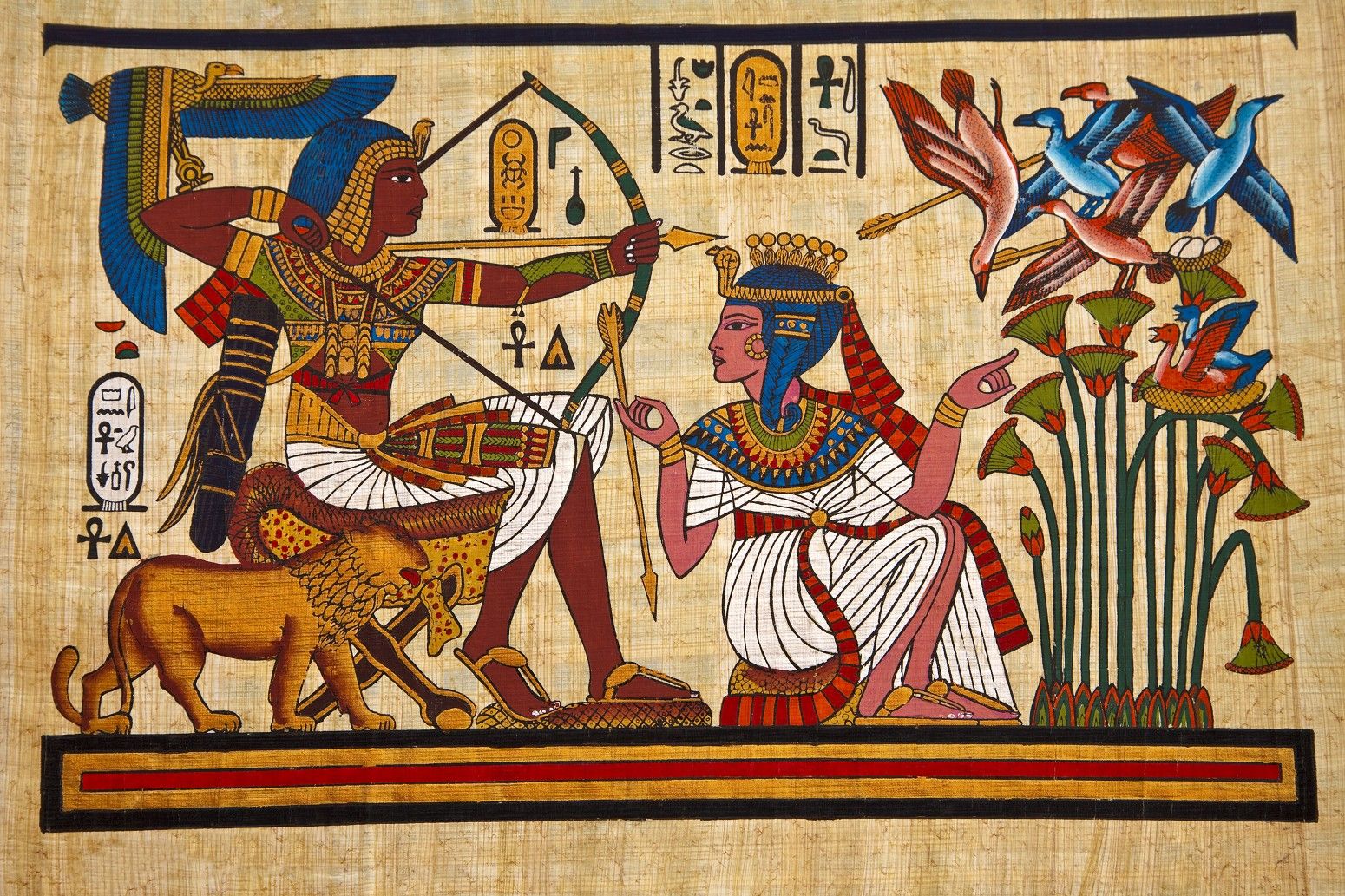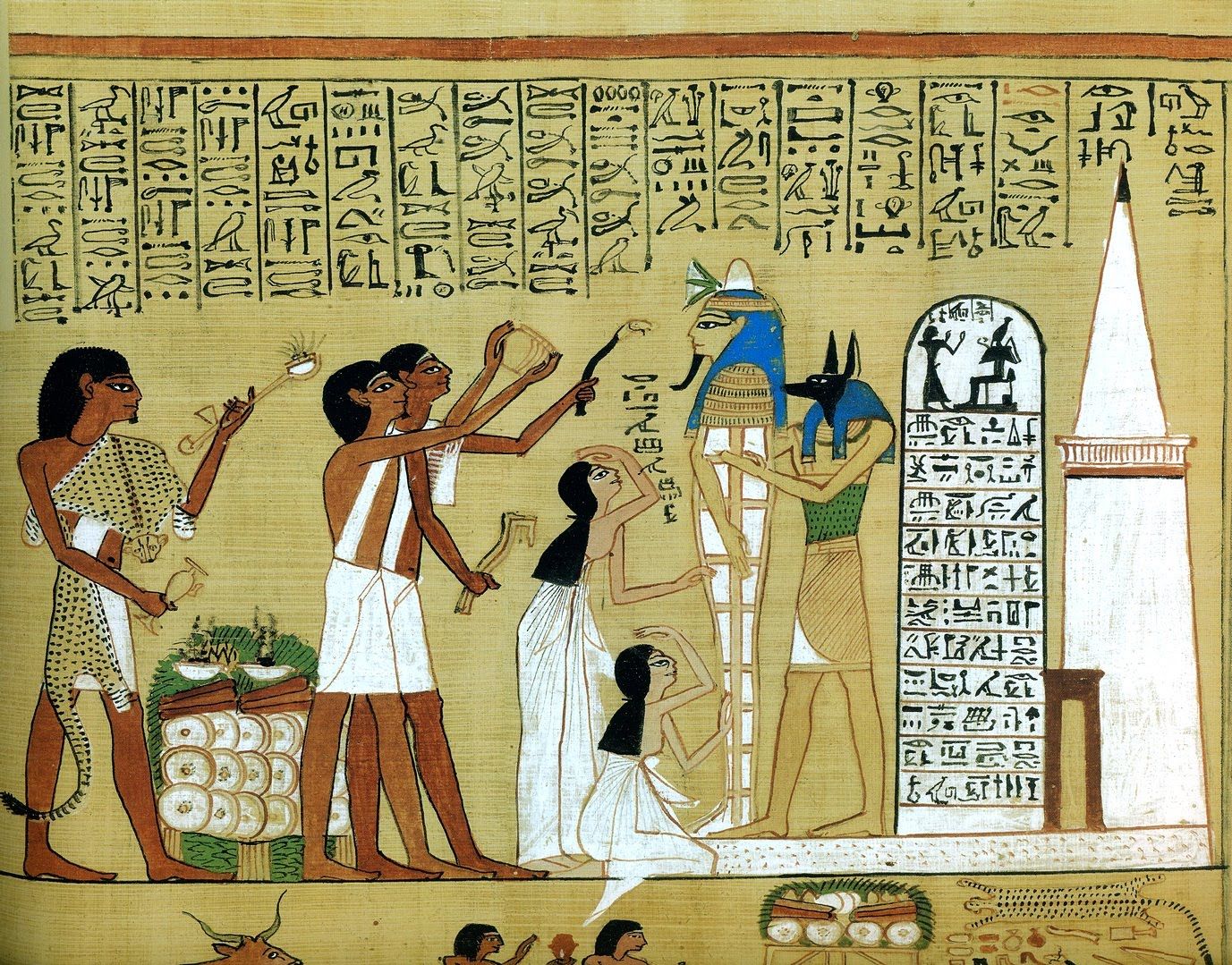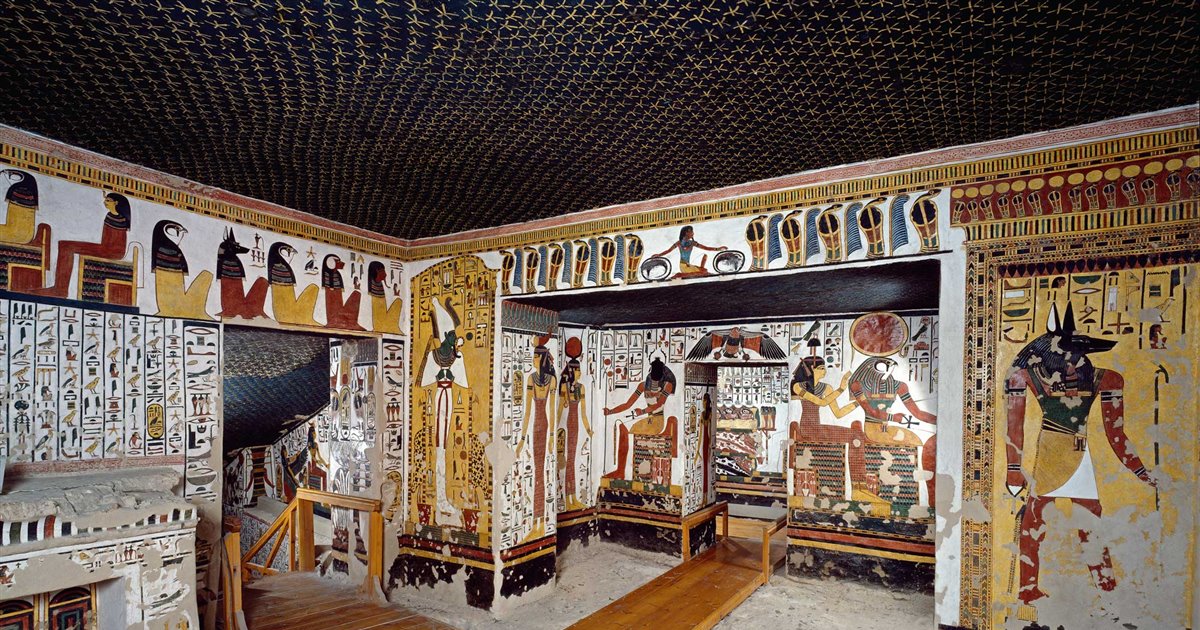The ancient Egyptians called their land Ta-Meri, beloved Country. And they had every reason to love their country, the unique nature allowed a great civilization to arise on the banks of the Nile in ancient times. The egyptian painting it is a reminder of this culture that left an indelible mark on history and continues to influence today.

egyptian painting
The art of the Egyptians was unusual and vivid; we do not see anything similar among other peoples. In the dry climate, enough examples of ancient Egyptian painting have survived on temple walls and in sealed tombs to understand its characteristics, traditions, and development over time. Walls with bas-reliefs served as the basis for painting more often. Paints were applied to the plastered walls and the placement of the murals was subject to regulations dictated by the priests.
Principles such as the correction of geometric shapes and the contemplation of nature were strictly observed, has always been accompanied by hieroglyphs that explain the meaning of what is represented. In Egyptian painting, all the elements of the composition appear flat and when it is required to represent the figures in depth, the artists superimpose them on each other. The drawings are distributed through horizontal strips separated by lines where the most important scenes are always in the center.
Egyptian painting was subordinated to a religious cult. In the mind of the Egyptians, all life was just a preparation for death and the subsequent eternal existence in the afterlife. The tomb murals were supposed to tell the god of death, Anubis, who was buried here and provide the deceased with all the benefits of the world of the dead. Art did not pursue other goals, so we do not find in it picturesque landscapes or emotional portraits.
Egyptian drawings of people also include features in the front and in profile. To keep the proportion, the artists drew a grid on the wall. The oldest ones consist of eighteen squares (four cubits), while the newest ones have twenty-one squares. The women were portrayed with pale yellow or pink skin. To create a masculine image, brown or dark red was used. It was customary to portray people in their prime.
Egyptian painting is characterized by the so-called hierarchical view, for example, the higher the social status of the person depicted, the larger the size of the figure. Therefore, in battle scenes, the pharaoh often looks like a giant. Images of people can be divided into archetypes: pharaoh, scribe, craftsman, etc. The dimensions of the lower social strata are always more realistic and dynamic.
The Egyptians used bright, long-lasting mineral paints that were rarely mixed. Each base color was assigned a certain symbolic meaning, on which what should be depicted with this paint depended:
- White: The symbol of dawn, victory and joy.
- Black: Symbolizes death and rebirth in the afterlife.
- Red: The color was associated with an arid land scorched by the sun and signified evil. The fratricidal god Set and the harmful animals were written in red.
- Yellow: One of the favorite colors of the Egyptians. It meant an expression of eternity and the incorruptible divine flesh
- Green: The color of hope, rebirth and youth. Characteristic of the resurrected god Osiris.
- Blue: It meant water and the promise of a new life.
Periods of ancient Egyptian art
The earliest period from which wall paintings have survived is the dynastic period, which lasted from the fourth to the third millennium BC. Then, on the banks of the Nile, the first agricultural nome states were formed, between which a struggle for power was waged.
Old Kingdom (XNUMXnd-XNUMXrd centuries BC)
It was then that the construction of the Great Pyramids took place. At this time, the bas-relief and the painting were not yet differentiated from each other. Both means of expression were used to decorate the tombs of pharaohs, members of the royal family, and officials. During the time of the Old Kingdom a uniform painting style was formed for the whole country.
Early wall paintings were distinguished by a fairly narrow range of colors, mainly black, brown, white, red, and green tones. The image of people is subject to a rigid canon, when gravity is greater, greater is the state of the person represented. The dynamism and expression are characteristic of the figures that represent secondary characters.
Mainly scenes from the life of gods and pharaohs were depicted who were often depicted with animal heads, but these images were not fierce and terrifying, but majestic and solemn. The colorful frescoes and reliefs recreate the environment that should surround the deceased, no matter what world he is in. The painting reaches a high degree of filigree, both in the images of the characters and in the silhouettes of the hieroglyphs.
The sculptures of Rahotep and his wife Nofret (XNUMXth century BC) are considered one of the most significant monuments of the Old Kingdom: the male figure is painted brick red and the female figure is yellow. The figures' hair is black and the clothing is white and there are no halftones.
Middle Kingdom (XNUMXnd-XNUMXth centuries BC)
During this time, Egyptian wall painting was improved and simplified. The scenes depicted become more complex and dynamic, displaying a structure and order that was absent in the Old Kingdom era. A special place is occupied by a multi-colored painted relief. Intricate scenes can be seen in the cave tombs that are more dynamic than in earlier times. More attention is paid to the contemplation of nature, and the paintings are increasingly decorated with floral ornaments.
Not only the ruling class but also ordinary Egyptians are depicted, for example farmers can be seen at work. At the same time, the inherent characteristics of painting are the perfect order and clarity of what is depicted. Above all, in the context of other monuments, the paintings of the tomb of the monarch Khnumhotep II stand out, where the hunting scenes and the figures of animals are represented using halftones. The tomb paintings of Thebes are no less impressive.
New Kingdom (XNUMXth-XNUMXth centuries BC)
This period stands out for the best examples of Egyptian painting. During this period painting, like culture in general, reaches its greatest flourishing. Artisans are bolder in their use of previously unbreakable canons and use a wider color gamut with translucent layers. The New Kingdom era was characterized by hitherto unknown color gradation and light transmission.
The interaction with other Asian peoples brings interest in the ornaments and the high level of detail. The impression of movement is enhanced. Tints are no longer applied in an even matte layer, artists are trying to show smooth tonal spillovers. Since this period is associated with successful conquests, through painting the pharaohs demonstrated their strength to the border towns, therefore it was common to depict scenes that reproduced episodes of war.
Since this period is associated with successful conquests, war scenes are often reproduced in paintings. Images of the pharaoh appear in a war chariot taken from the defeated tribes. Nefertari's tomb is a perfect set of Egyptian architecture and painting. Currently, it is the most beautiful tomb in the Valley of the Queens. The murals cover an area of 520 m². On the walls you can see some chapters of the Book of the Dead, as well as the queen's path to the afterlife.
Later, the Egyptian culture gradually loses its characteristic features under the influence of the conquerors, first the Greeks, and then the Romans. At the beginning of the new era, the eclectic art of Fayoum portraiture flourished in Egypt. These images were also used for burial, but they were created during life, when the person was still full of strength. Or the artists used their imagination to paint such a picture. The Fayum portraits are characterized by the desire to convey the main characteristics of the hero, to make him recognizable.
The inhabitants of Ancient Egypt believed that every person after death would need a picturesque figure or image for the transmigration of the soul. These products were created in large numbers and many of them have survived to this day.
Here are some links of interest:

